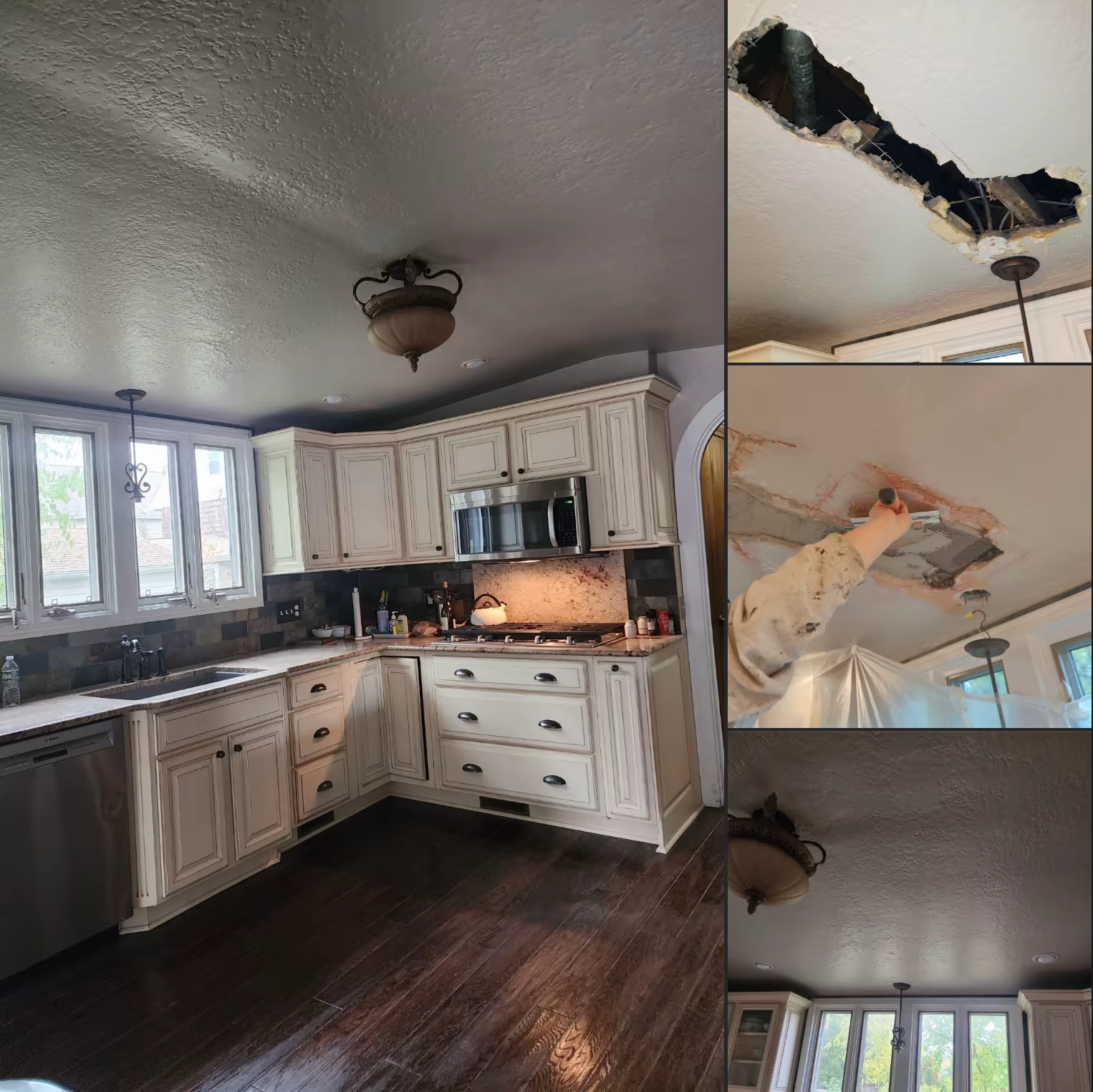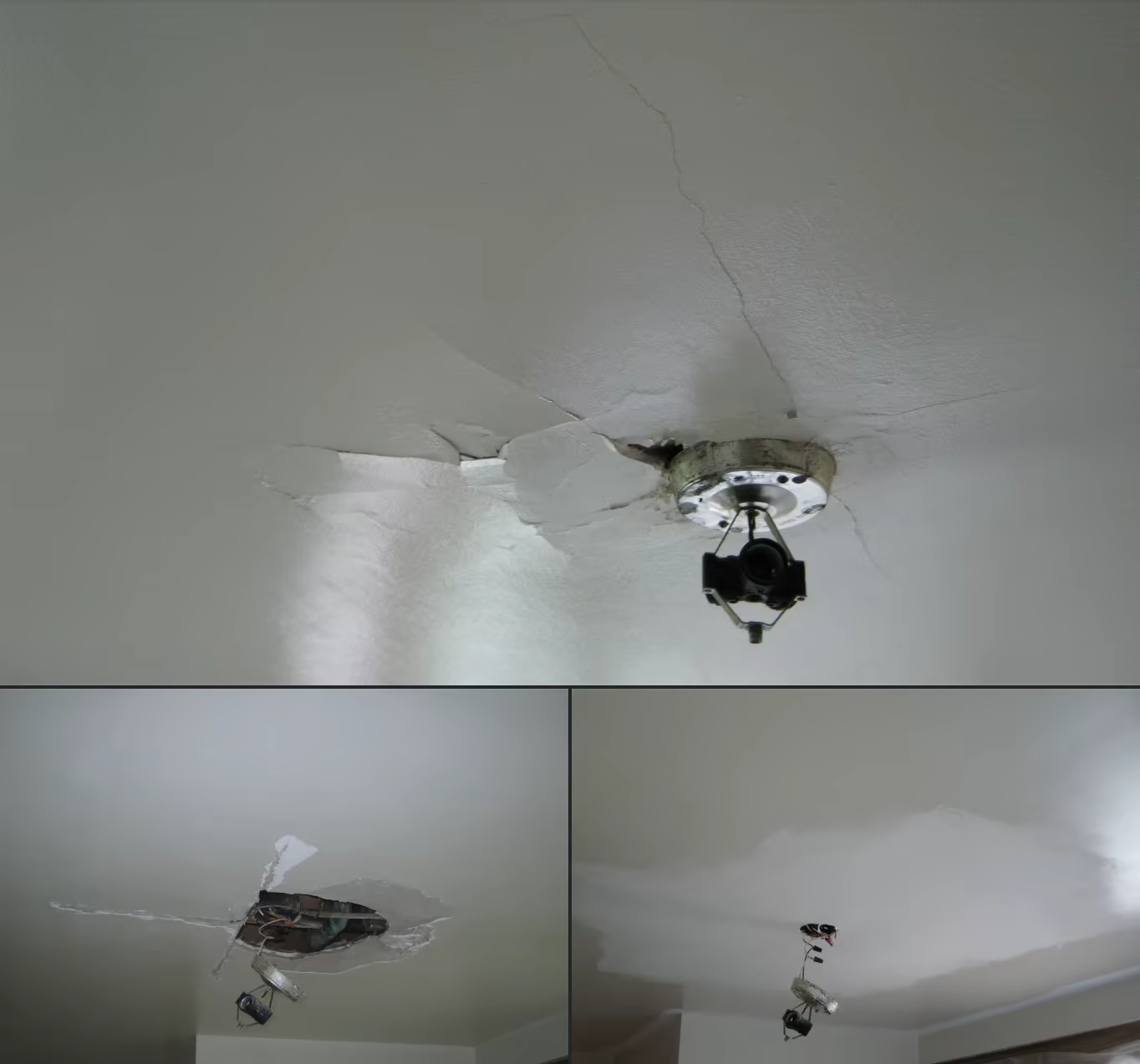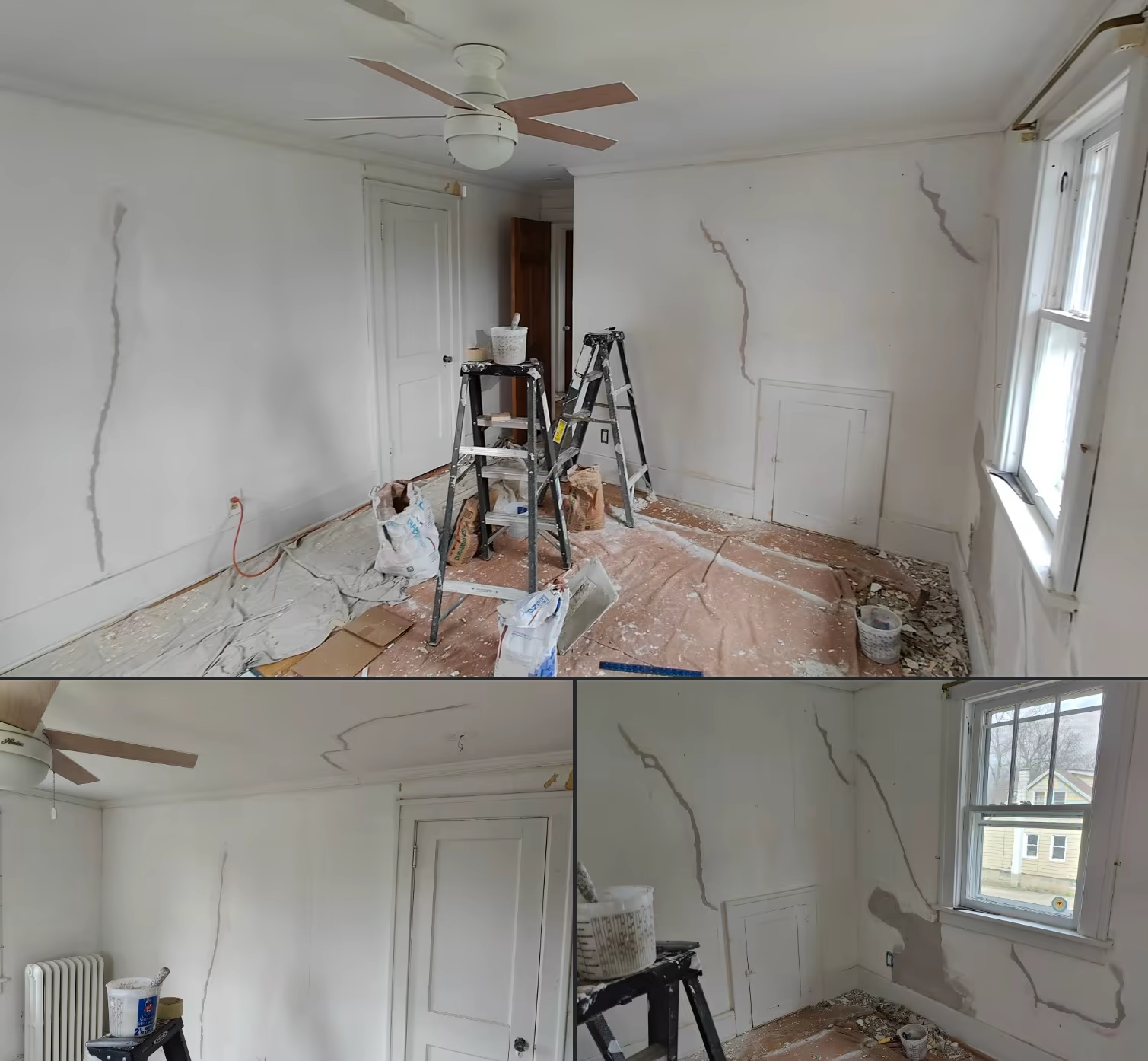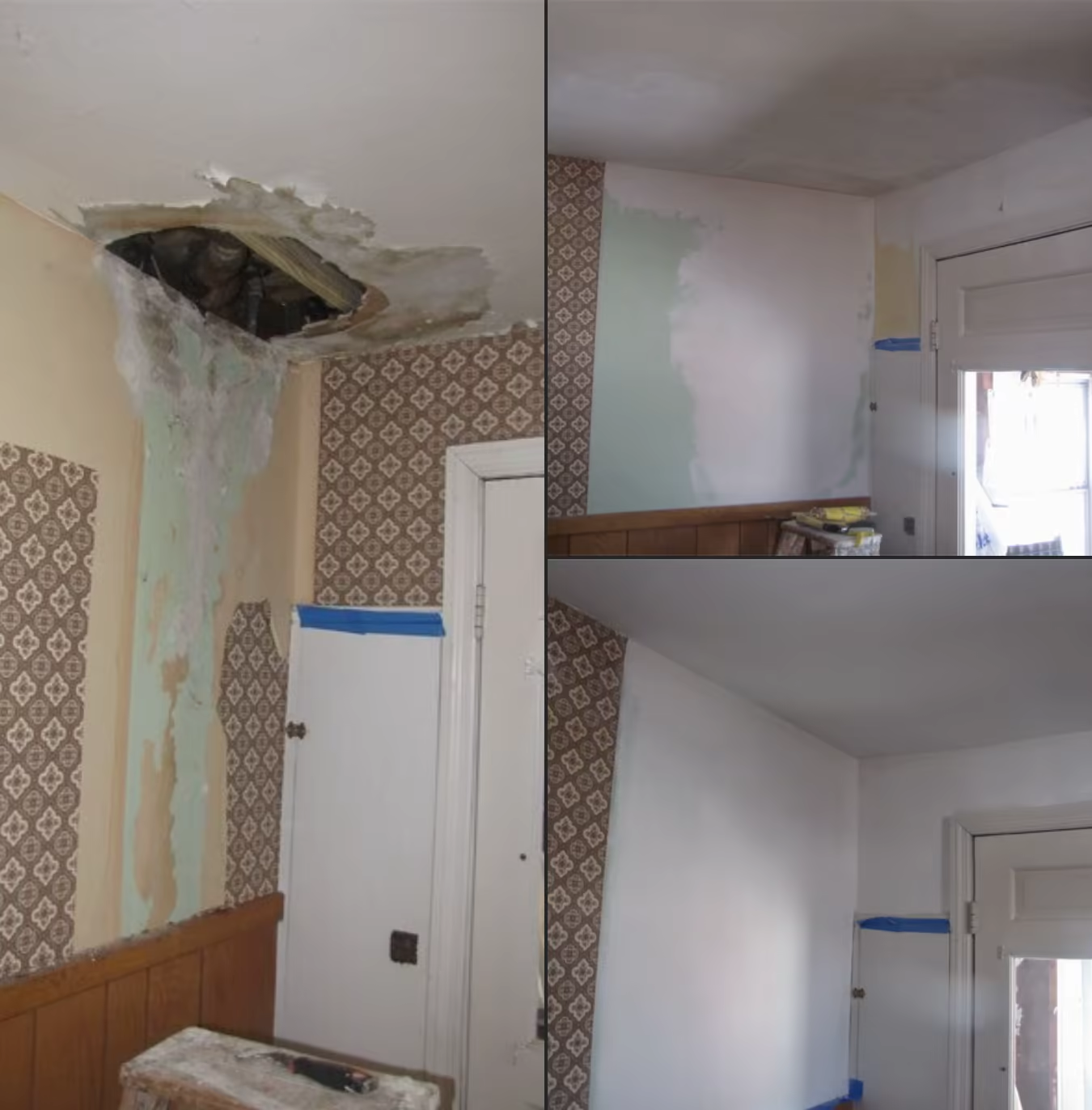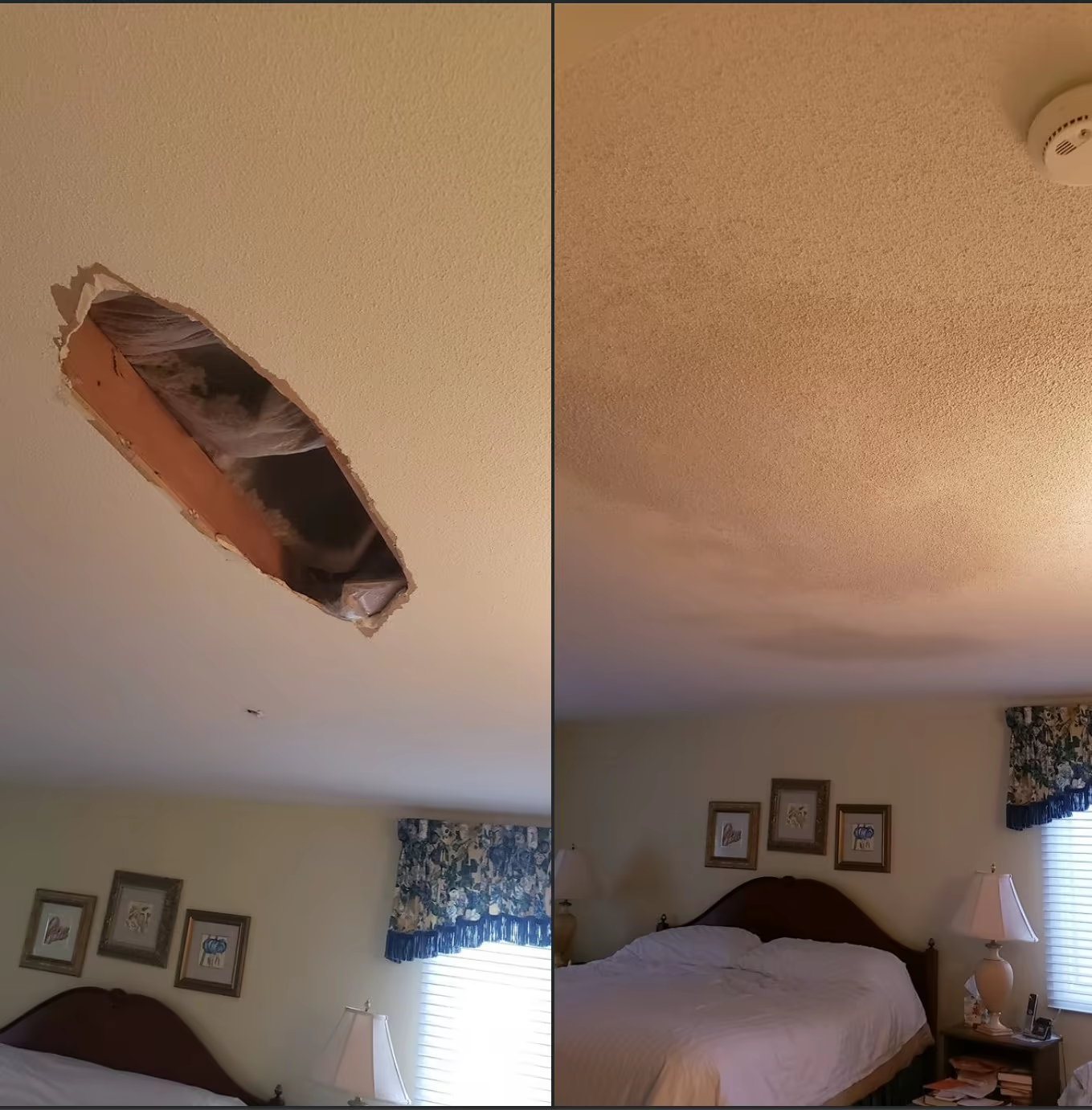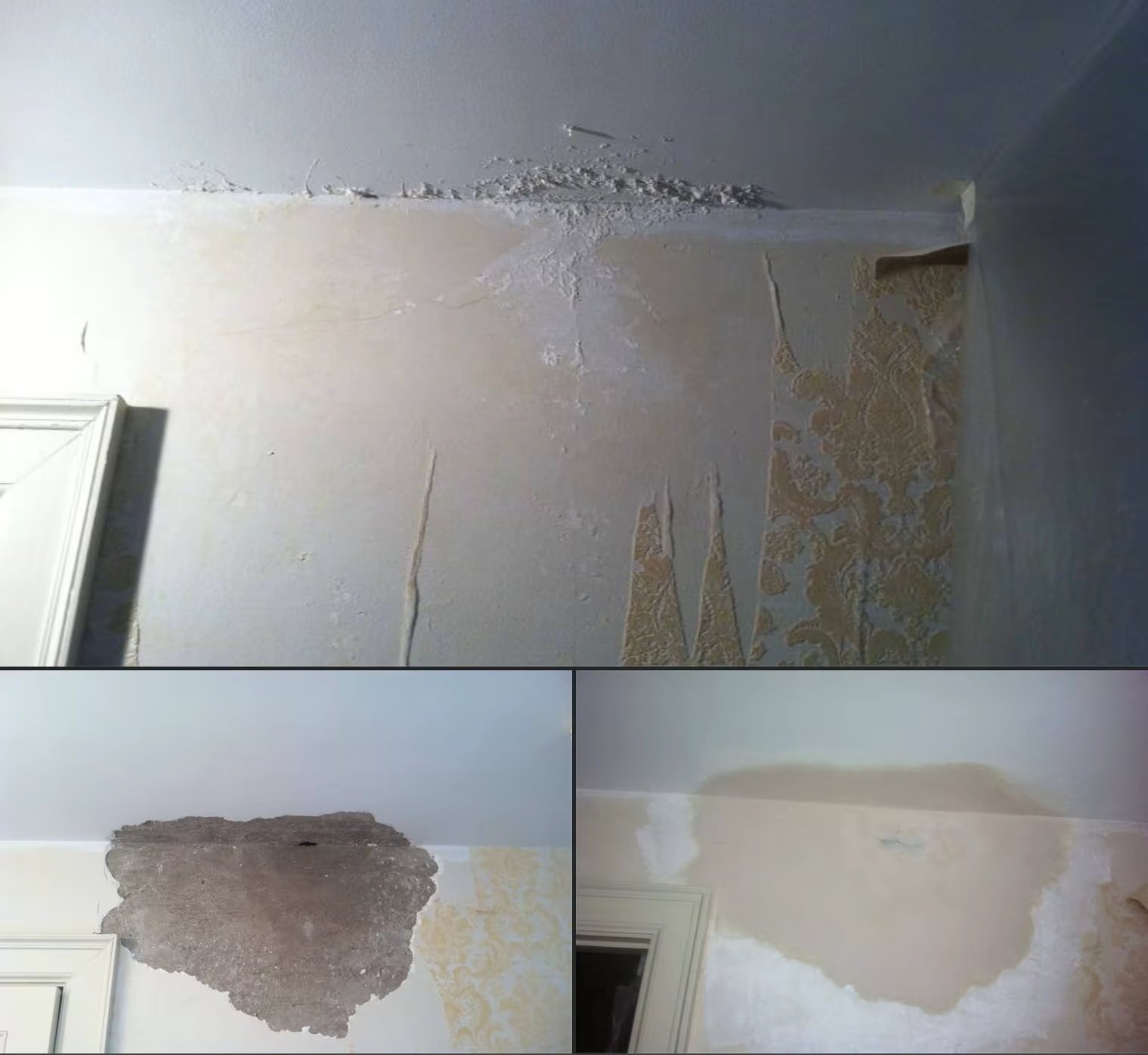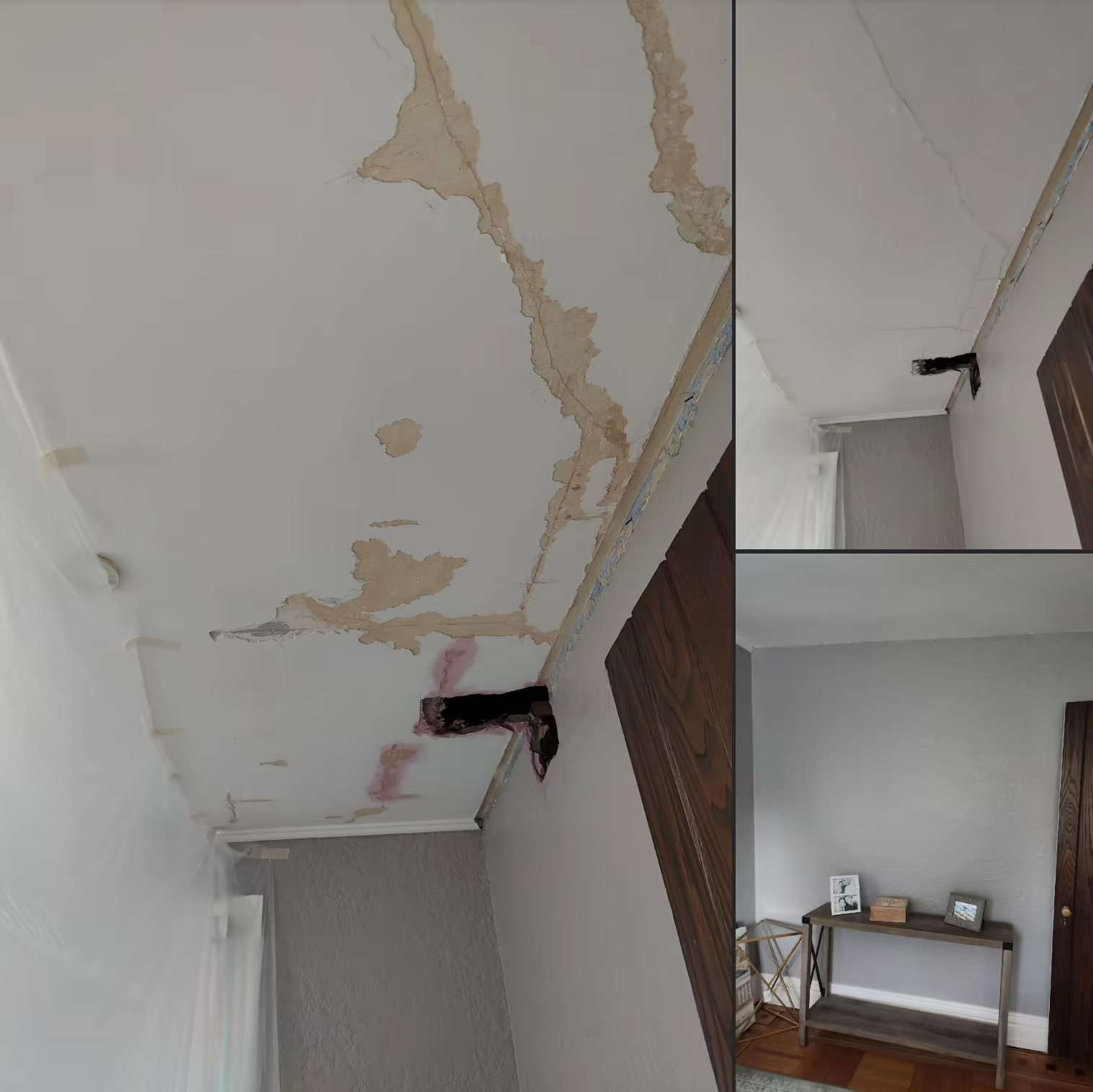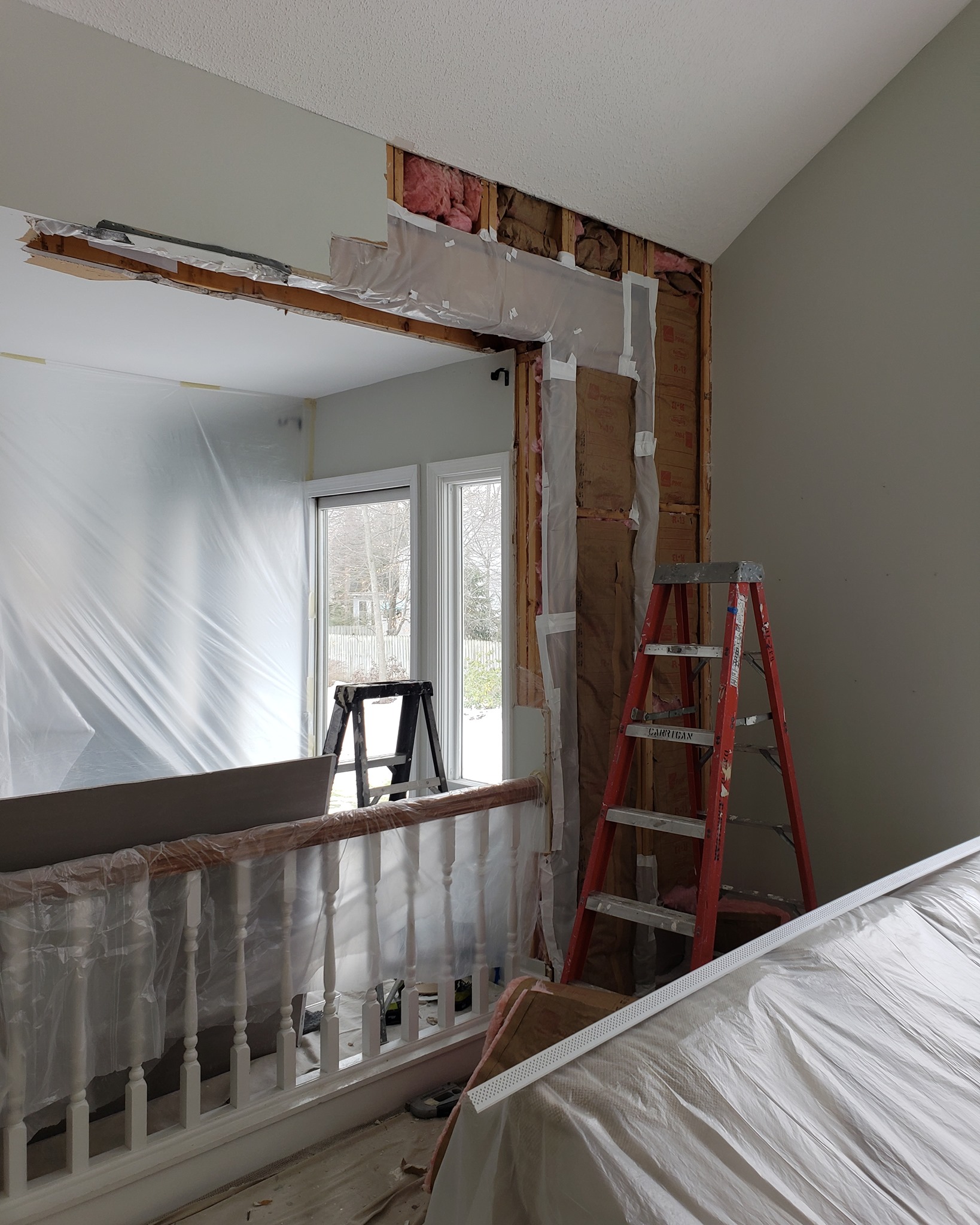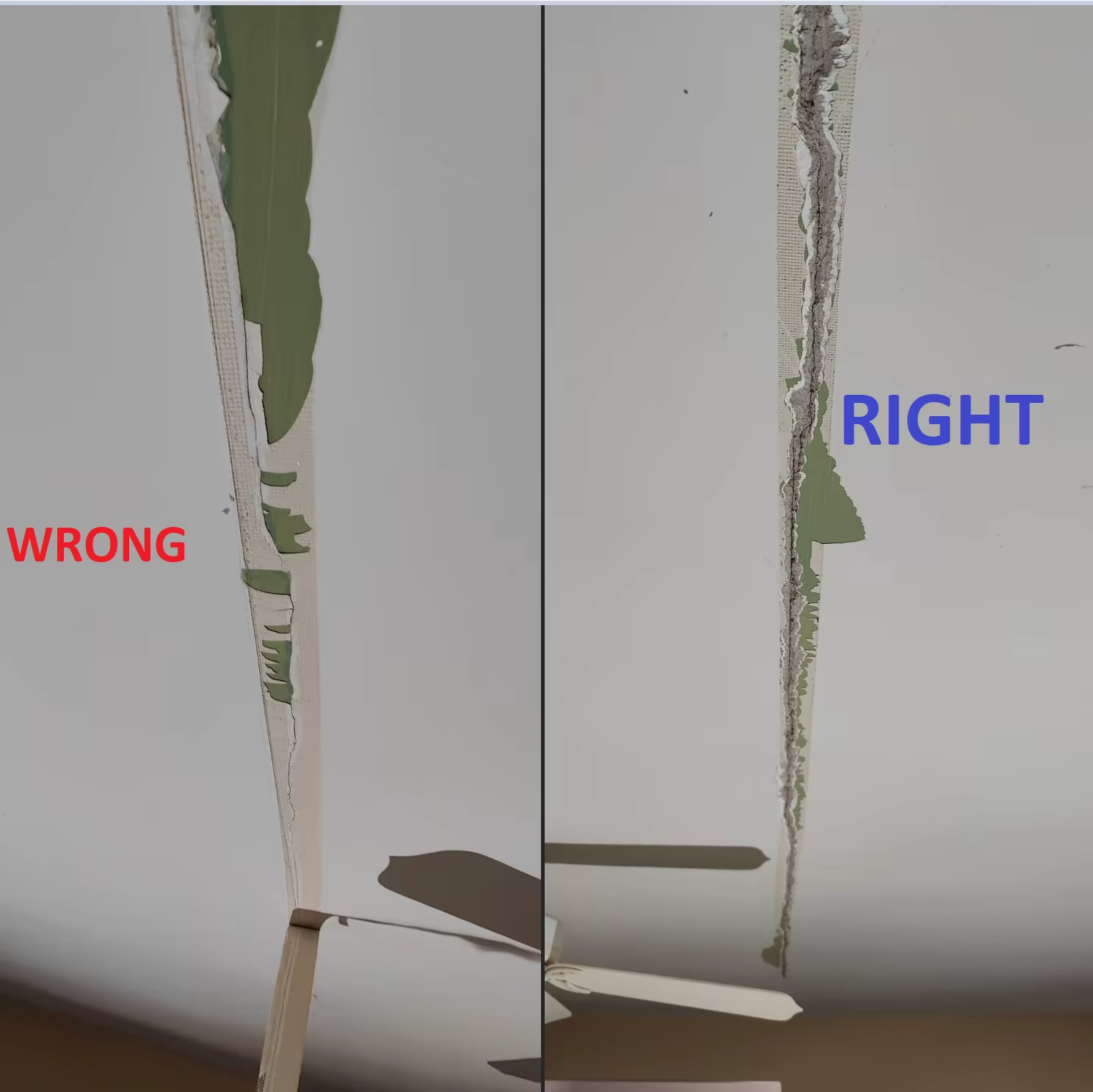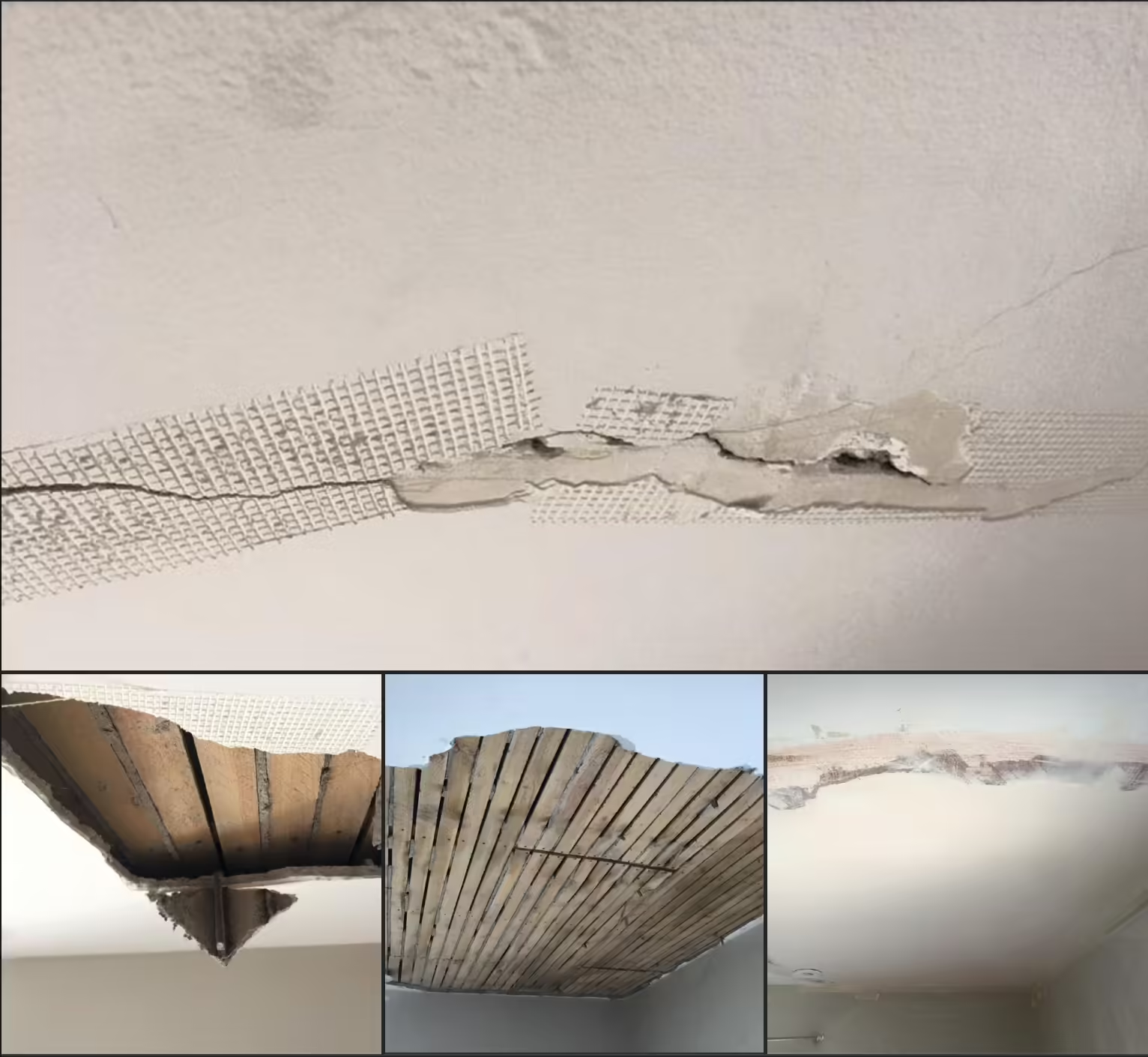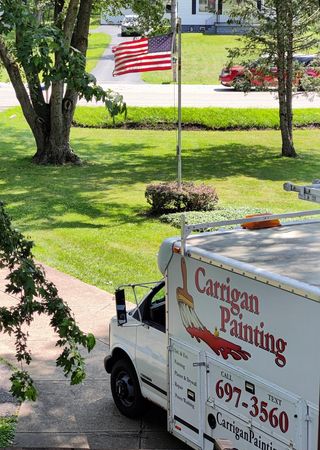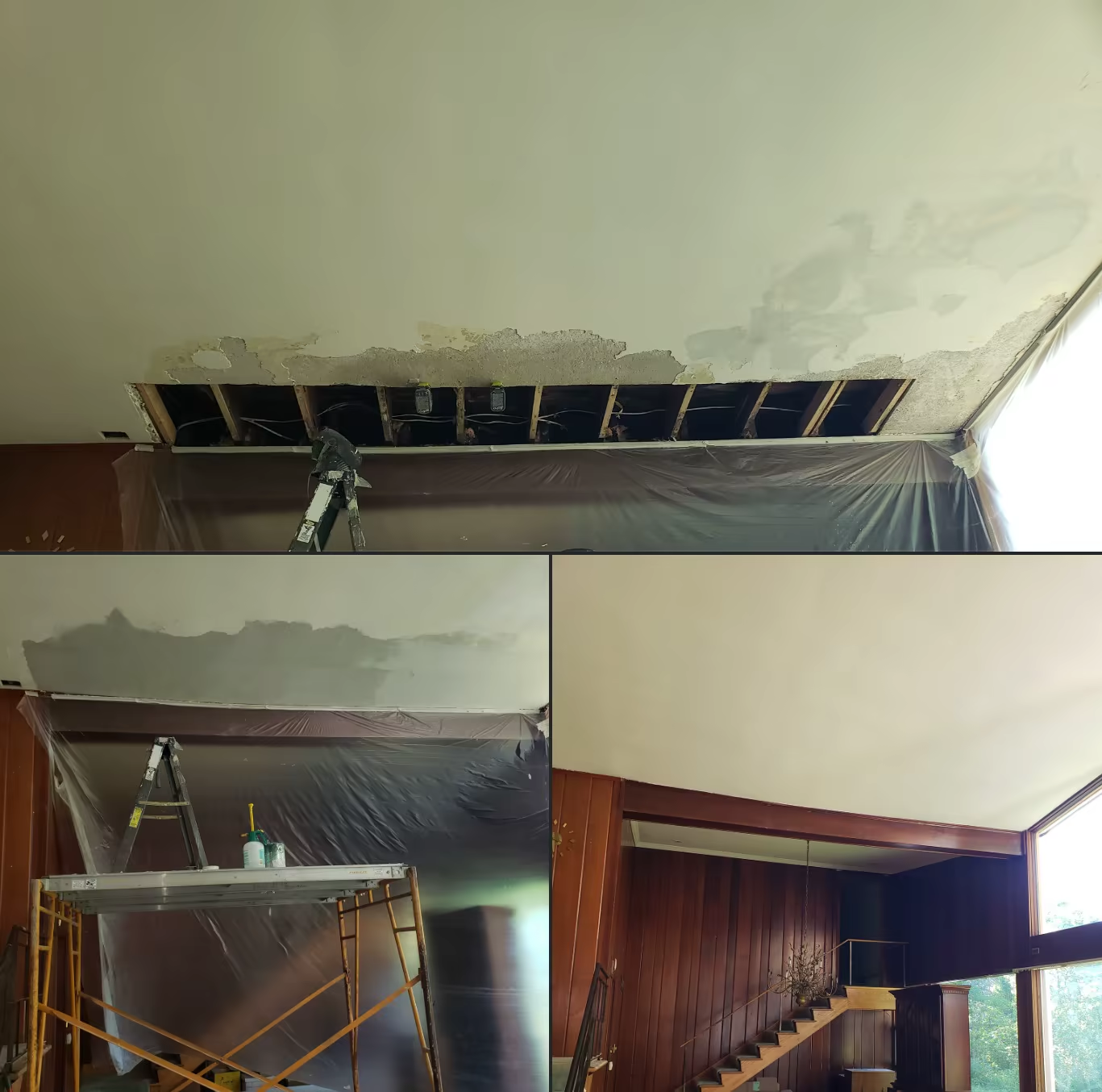When to Call a Professional
Anyone can repair minor wall and ceiling damage, after all you can buy drywall mud, premixed in a bucket. All you have to do is apply it. Sand it smooth and ta da! Patched. Using the vast amount of information contained on this website, the average person should be able to figure out how to patch minor damage to walls and ceilings with relative ease.
Carrigan Painting
Its the more complicated damage is when its often a good idea to speak to the local ceiling repair expert about repairing the damage. When it involves large repairs, water damage, big holes, ect things can become a bit more complicated. Especially if it involves water! Which is why you should give us a call, or drop us an E-Mail. If you need a plumber we recommend Ed Youngs or Jeffrey Plumbing

